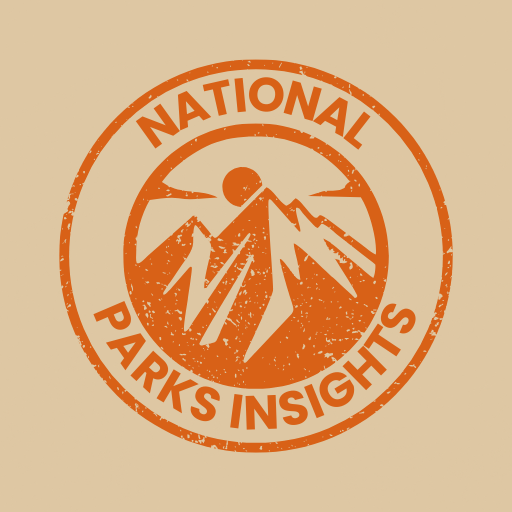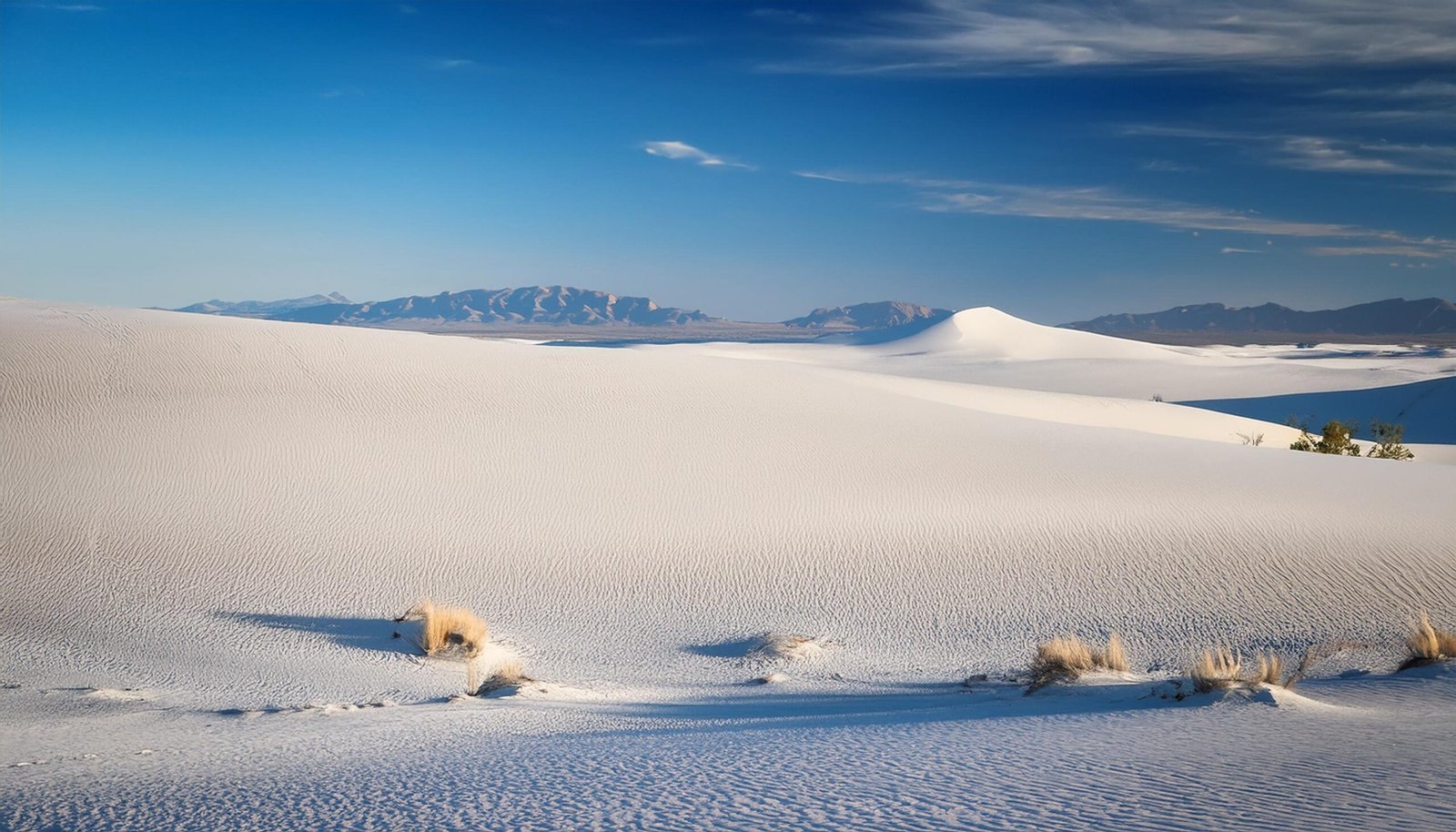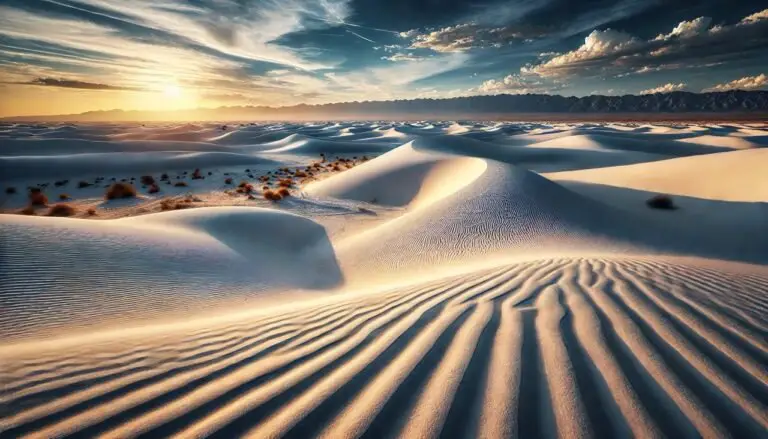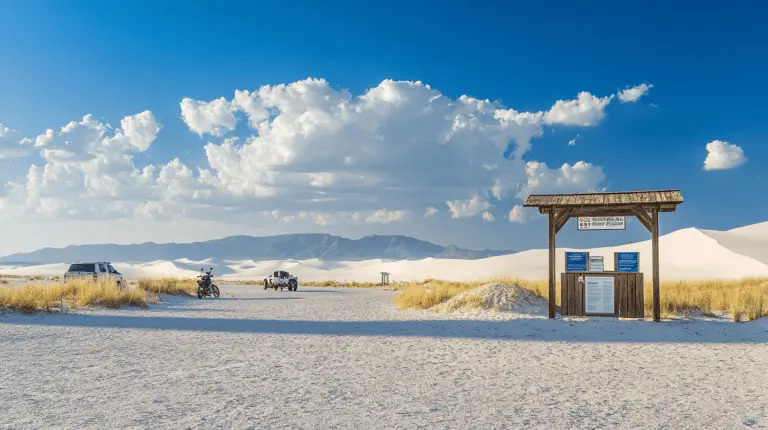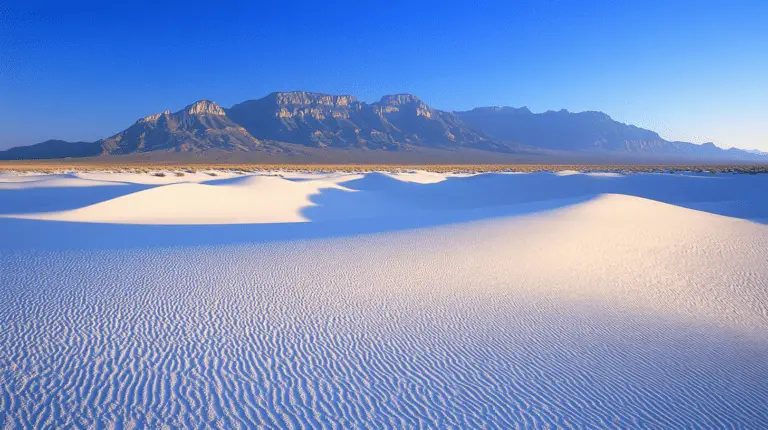Discovering White Sands National Park Roswell
Where and When
White Sands National Park is nestled next to Holloman Air Force Base in New Mexico. It’s also wrapped around by the White Sands Missile Range, giving it an intriguing historic backdrop (NPS.gov). If you’re planning a visit, aim for PO Box 1086, Holloman AFB, NM 88330.
President Trump made it official as a national park on December 20, 2019. This park isn’t just a pretty face; it’s a gem with real history. Drawing roughly 600,000 visitors each year, it’s the hot spot of New Mexico’s NPS sites. The place has been a crowd-puller since its opening ceremony on April 29, 1934 (National Park Service).
Dazzling Gypsum Dunes
This park is home to the largest gypsum dunefield on the planet, stretching over 275 square miles (710 km²) (Wikipedia). Think of a vast white desert with dunes rising up to 60 feet, sparkling in the sun.
These gypsum dunes started forming 280 million years ago, thanks to ancient sea sediments. Nature still plays around, shaping and reshaping the dunes today.
With roughly 4.5 billion short tons (4.1 billion metric tons) of bright gypsum sand, this place draws tourists looking for a truly unique experience. For a deep dive into how these sands came about, hit up the gypsum formation section.
| Feature | Info |
|---|---|
| Gypsum Dunefield Size | 275 sq mi (710 km²) |
| Dune Heights | Up to 60 feet |
| Gypsum Sand Volume | 4.5 billion short tons (4.1 billion metric tons) |
As you wander through White Sands National Park, expect breathtaking views and endless natural wonders. Don’t forget to lace up for some hiking trails, snap some amazing photos, and even zip down the dunes on a sled to make your visit unforgettable.
Geological Magic at White Sands National Park
Nestled near Roswell, White Sands National Park is famed for its mesmerizing gypsum dunes. Dive into the backstory of how this stunning natural feature came to be, and you’ll find your awe deepening even more.
Building a Marvel Over 280 Million Years
So, we’re talking around 280 million years back. The Permian Sea hung out here, leaving gypsum all over the sea floor (National Park Service). Fast forward millions of years, and the sea took off, but the gypsum stayed, setting the stage for White Sands.
Jump to about 10,000 years ago, and things got hot and dry, turning the area into the Chihuahuan Desert. That’s when the magic really started – wind whipped up bits of gypsum, creating the shifting dunes that draw crowds today.
| Picture It | Big Changes |
|---|---|
| 280 million years ago | Gypsum layered on the Permian Sea’s floor. |
| 12,000 years ago | Ice Age creatures roamed Tularosa Basin, with lakes and streams everywhere. |
| 10,000 years ago | Desert vibes kicked in, shaping what we see now. |
Wind and water keep those gypsum particles dancing, reshaping the terrain. These sand grains range from as tiny as a pinhead to about nickel-size (National Park Service).
The Biggest Gypsum Sandbox Ever
Spanning 275 square miles, White Sands is the Earth’s largest gypsum dunefield (National Park Service). Situated in the Tularosa Basin, some dunes shoot up to 60 feet high!
Around two to three million years ago, the Rio Grande River did its thing, dumping sediments into the area. This led to the formation of the ancient Lake Otero, which was a whopping 1,600-square miles (NPS – Geology of White Sands).
| Stat Snapshot | Numbers |
|---|---|
| Dunefield Area | 275 square miles |
| Lake Otero (Back in the Day) | 1,600 square miles |
| Max Dune Height | 60 feet |
Lake Otero eventually dried up, leaving behind gypsum. Winds broke this down into powdery sand that formed today’s dunes. To get your bearings and plan a trip, check out the White Sands National Park map.
Be sure to explore White Sands National Park and soak in this natural wonder. For weather updates and tips on making the most of your visit, head over to white sands national park weather.
So pack your sunscreen, grab your camera, and get ready to experience this gypsum wonderland up close and personal!
Human History at White Sands
Early Visitors and Adventurers
White Sands National Park holds a treasure chest of human stories dating back over 10,000 years. The first folks to wander here were likely hunting for basic needs like grub, water, and a roof over their heads. Archaeologists have dug up ancient tools and knick-knacks from these early wanderers. More fascinatingly, you’ll find what’s believed to be the oldest human footprints in North America, left between 21,000 and 23,000 years ago. And who were the neighbors back then? Extinct giants like ground sloths and Columbian mammoths left tracks, too (Wikipedia).
Later, Spanish treasure hunters and miners showed up, eyes gleaming at the sight of glistening gypsum deposits and salt. The grassy haven initially drew ranchers who put down roots and started raising cattle. Each of these groups left their own stories etched into the very sand, adding layers to the park’s rich history.
Curious about how White Sands has dazzled as the backdrop for movies, music videos, and commercials? Check out our feature on White Sands National Park history and soak in the mesmerizing scenes and sunsets.
Military Footprints and Historical Sites
White Sands didn’t just gain attention for its scenic beauty. The spotlight hit during World War II. After Pearl Harbor, Uncle Sam saw the area’s potential for top-secret research and tech trials. In 1942, President Roosevelt signed Executive Order #9029, staking out the Alamogordo Bombing and Gunnery Range, a forebear to Holloman Air Force Base and the White Sands Missile Range.
Today, these military sites keep buzzing just outside the park’s borders, continuing crucial operations and research. Wanna dive into the gritty details of military tech and strategies? Various exhibits and tours spill the beans.
White Sands also sparked a whirlwind of debates over its application to become a World Heritage Site—locals and national folks couldn’t settle on it (Wikipedia). For more on this drama, check our deep-dive at White Sands National Park history.
Dying to explore? Whether it’s ancient tracks or military tales, White Sands offers a thrilling ride through the sands of time. Before you head out, peek at White Sands National Park hours to plan your visit for a smooth adventure.
Discover the Wild Side of White Sands
White Sands National Park is like a natural zoo, bursting with all sorts of plants and critters. You’ll be amazed by the variety of life you’ll bump into, from peculiar plants to unique animals. Here’s a sneak peek that will surely make your visit much more exciting.
Meet the Locals
White Sands is buzzing with life. How about some fun facts to spark your curiosity (Wikipedia):
- Plants: 300 types
- Birds: 250 types
- Mammals: 50 types
- Reptiles: 30 types
- Amphibians: 7 types
- Insects & Other Critters: 600 types
- Fish: 1 type
| Type | Number of Species |
|---|---|
| Plants | 300 |
| Birds | 250 |
| Mammals | 50 |
| Reptiles | 30 |
| Amphibians | 7 |
| Bugs & Others | 600 |
| Fish | 1 |
The rolling white sand dunes and hardy plants make this place a wonderland for nature lovers.
Rare Finds
Ever seen animals you can’t find anywhere else on the Earth? Well, White Sands is packed with about 45 of these special critters (Wikipedia). They’ve made the gypsum sand their cozy home.
Super Cool Endemic Species:
- White Sands Pupfish: This little swimmer, the park’s sole fish species, can grow up to 2.5 inches long. With silver scales and dark eyes, it’s a tiny spectacle.
- White Sands Woodrat: Don’t mistake it for your regular rodent; it’s got a pale hue perfect for the sandy dunes.
Hitting the trails or setting up camp overnight? Keep your eyes peeled for these special beings. Knowing about them not only makes your adventure thrilling but also makes you appreciate the park’s wonders even more.
For insider tips on observing the local wildlife, hop over to our pages about White Sands animals and the park’s plants. Planning a visit? Check out our visitor center amenities and rules you need to know for an easy and fun trip.
Fun Things to Do at White Sands
Ready for an adventure at White Sands National Park? There’s so much to do and see—you won’t wanna miss it. From hiking to stargazing, it’s packed with activities that’ll blow your mind.
Hiking and Trails
White Sands has some killer trails for every hiker. Whether you’re looking for a chill walk or a tough trek, there’s something here for you.
- Dune Life Nature Trail: This chill 1-mile loop winds through the dunes. Perfect for learning about the crazy plants and animals that live here, with plenty of informative signs.
- Interdune Boardwalk: An easy, 0.4-mile stroll that’s wheelchair accessible. Enjoy gorgeous views and learn about the ecosystems from educational panels along the way.
- Alkali Flat Trail: Got some stamina? This 5-miler is for the real explorers. It takes you to the edge of the flat and treats you to expansive, peaceful views. Just don’t forget water and sunblock.
| Trail Name | Distance (miles) | Difficulty | Special Features |
|---|---|---|---|
| Dune Life Nature Trail | 1 | Easy | Signs about plants and animals |
| Interdune Boardwalk | 0.4 | Easy | Wheelchair accessible, educational panels |
| Alkali Flat Trail | 5 | Tough | Vast sand expanses, peaceful views |
Need a map? Grab it here.
Stargazing and Night Visits
The skies at White Sands? Unreal. With no city lights, the stars really pop. Perfect for stargazing.
The park often hosts night events. Expect guided tours and cool talks about the stars and planets. Check the opening hours to plan your visit.
Take a nighttime stroll and enjoy the moonlit dunes. The white sand reflects the moonlight, giving everything an otherworldly glow. Bring a blanket and just lie back—it’s the perfect way to chill and watch the stars.
White Sands has got it all. Whether you’re trekking through the amazing white sands dunes or soaking in a starry night sky, your time here will be unforgettable.
Need more tips? Head over to our guide for a memorable visit.
Visitor Info Cheat Sheet
Planning a wild day out or a chill visit? Here’s your ultimate guide to White Sands National Park Roswell. Tips and tricks to make your day epic.
What You’ll Find at the Park
We’ve got the lowdown on all the good stuff to make your visit comfy and fun. Here’s the scoop:
- Visitor Center: Your first stop! It’s got a mini-museum, bathrooms, and an info desk. Plus, you can see cool exhibits about the park’s history, geology, and plants. Check out more here.
- Restrooms: Plenty around so you’re never caught off guard. Find exact spots here.
- Picnic Areas: Shaded spots perfect for lunch breaks and snack attacks.
- Gift Shop: Grab a souvenir, an informative book, or anything you might’ve forgotten.
- Trails: Tons of trail options to satisfy your inner explorer. Detailed info here.
Pro Tips for the Best Day Ever
Make sure you nail your visit with these handy tips:
- Kick Off at the Visitor Center: Start there for maps, exhibits, and advice from rangers.
- Get Active: Think hiking, stargazing, and snapping the perfect photo. Handy tips here.
- Weather Check: Always a good idea to peek at the weather forecast to avoid surprises.
- Stay Hydrated: This place is dry, so bring lots of water.
- Sun Gear: Hats, sunglasses, and sunscreen are must-haves.
- Good Shoes: Sand-friendly, comfortable footwear is key.
- Follow the Rules: Help keep the park beautiful by sticking to guidelines. Learn more about them here.
- Sledding Fun: Don’t forget a sled! You can even buy one at the gift shop. More details here.
- Starry Nights: The park’s awesome after dark too. Check out night hours here.
By planning ahead and knowing the drill, your visit to White Sands is bound to be epic. For even more insider info, see park tours. Have a blast!
